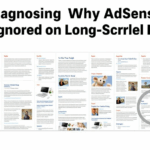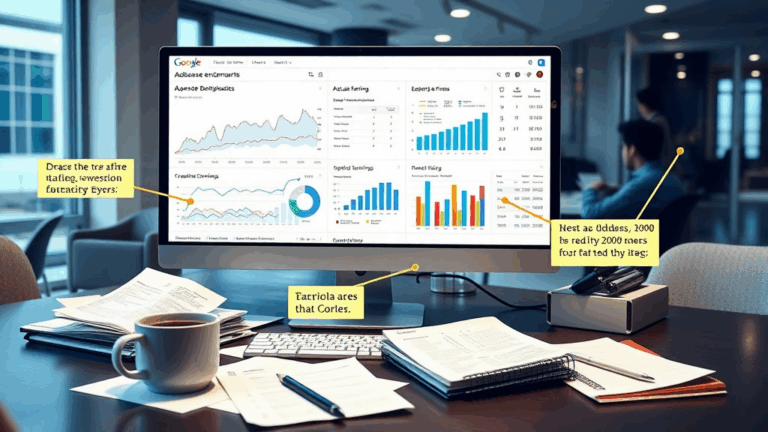AdSense Multiplex Ads in Booking Sites Are Trickier Than They Look
Multiplex Ads vs Content Velocity on Review Pages
So here’s what threw me off the first time I slapped a Multiplex ad unit onto a page aggregating hotel reviews: it absolutely tanked the engagement for the rest of the content. Like, user session duration went from “a nice stroll through a gallery” to “a quick glance and bounce.” My guess? Users mistook the ad grid for the end of the content. Brutal.
If you’re running reviews (user-contributed, scraped, or editorial), Multiplex blends in a little too well. That’s great for CTR but awful if the layout feels front-loaded. If your reviews are in a loop below the fold, and the Multiplex shows above it… congrats, you just buried your actual value.
The weird thing is, Google kinda rewards this click-sink with short-term RPM lifts. But next week, your sessions nosedive. If you’re tracking anything longitudinal via GA4 (please, please don’t rely on AdSense page RPM alone), you’ve probably seen the cliff.
Layout Shift Madness on Booking Confirmation Screens
I made the mistake of injecting Multiplex units into hotel booking confirmation screens — yeah, that was dumb. What I didn’t expect was the literal page jump that lagged just enough to cause double bookings from frantic clickers. The ad loads a half second late, and suddenly the “Previous” button moves down by ~100px. People punch the same spot again, thinking it didn’t register. It did. Twice, actually.
This isn’t just an annoying CLS warning — it’s functional madness in transactional UX. Avoid ad units on confirmations at all costs. The Multiplex format is one of the worst offenders because it collapses and re-expands during the bidder warm-up process (I’ve seen GPT take about 450ms to resolve it on slower connections).
We ended up building a small mutation observer to detect DOM paint changes post-booking. Ugly, but better than explaining to guests why they got charged for two rooms in Dublin.
The Cache-Control Hell of Fast-Paced Inventory Pages
So your travel site pulls hotel inventory dynamically, using some light React on top of stale cache — maybe you’ve got a semi-static build with Cloudflare APO or something comparable. Multiplex is stubbornly unaware of your rehydration logic. It will either:
- Show a totally irrelevant ad grid based on pre-render context
- Or worse, stay blank while waiting for GPT to take a deep breath
The worst part? In Chrome DevTools, this behavior is tied to how the service worker or cache headers treat the initial HTML. Because AdSense gets injected server-side (sometimes), your client-side content loads first, but the ad grid doesn’t match.
Here’s an actual header conflict we traced:
cache-control: public, max-age=31536000
x-gpt-cache: HIT-bid-stale
x-adsense-page-level-tag: preloadedThat last one? Not documented anywhere, but it seems to signal GPT to avoid re-fetching on SSR-predictions. If that tells you nothing, you’re not alone. We had to A/B test with GPT disabled just to get back to parity.
Lazy Loading Conflicts with janky IntersectionObservers
If you’re using native loading="lazy" on images — and what booking site isn’t — don’t be shocked when Multiplex occasionally fails to insert itself at all. It happens more often if there’s a custom IntersectionObserver tracking visible reviews or listings.
Turns out, Multiplex units dispatch a visibility trigger before the full component is actually painted into the DOM — which completely breaks with custom wrappers waiting for image loads before firing analytics.
Found this gem buried in a verbose console trace: “adsbygoogle push failed: container element not fully realized at triggerStart”
I could never repro it consistently on desktop Chrome. But on mobile Safari with slow 3G emulation? Fails maybe 1 in every 6 fresh sessions.
The Wild Inconsistency of Mobile Column Span Prediction
The default Multiplex ad code does a decent job adapting the grid for mobile viewports—most of the time. But here’s where it gets dumb: if you apply a custom CSS grid layout around the ad unit (say, a container that’s set to 3-column on desktop and 1-column mobile), AdSense gets confused and sometimes tries to render the ad as a desktop grid inside a 1-column layout.
So you end up with overlapping divs, weird margins, and truncated images. I fixed this by literally running a regex against the user-agent in JS and injecting a data-width attribute manually before the ad script loads:
if (/Mobi|Android/i.test(navigator.userAgent)) {
script.setAttribute('data-width', '360');
}It’s hacky. But it stopped the overlapping ghost boxes from showing on certain Bluetooth-connected iPads (don’t ask me why those specifically were tripping it).
Page Speed Penalty and the Weird Initial Paint Metric Drop
Once I crammed a few Multiplex units into category-level pages (e.g. “Best Beach Hotels in Greece”), I noticed Lighthouse Performance scores plummeted. Not just a little — like 30 to 40 points wiped off First Contentful Paint. The kicker? The ads themselves hadn’t even painted yet.
We traced it to the GPT script requesting accurate viewport metrics before rendering the ad. Which delays the main thread on low-CPU devices. Bridging it with requestIdleCallback helped a bit, but the only real fix was to load the Multiplex unit after DOMContentLoaded, but even that got flagged by AdSense’s “ad not visible above the fold” warning.
You really can’t win. Unless your fold is like, half a viewport tall. Which no one sane does.
Review Schema Markup Collisions That Tanked CTR
This one really messed me up for a week. We had structured data injected via JSON-LD for hotel reviews — aggregateRating, reviewBody, the whole shebang. When I wrapped a Multiplex block inside that review item container (yeah, I know now), Google Search Console started flagging “non-review content inside review node”.
But worse, AMP versions of the same page (this site still had some legacy AMP endpoints!) just stripped the ad unit out entirely. No warning, no fallback, just — gone. Turns out, AMP validator sees third-party ad iframes inside a structured data content node and silently drops them to be safe.
Moved the ad blocks outside all schema-tagged areas, reindexed, and within days CTRs started bouncing back. Felt like scrubbing black mold out of your microdata.
Multiplex Ads in Modals Are a Lost Cause
Don’t do it. Just don’t. I thought it’d be clever to load a Multiplex unit in a bottom-sheet style modal — you know, the kind that comes up when a user hits “More Hotels in This Area”. Looked great in test. Live? Ads would intermittently fail to render until you scrolled the page first. Wasted impressions. Wasted paint time.
According to the GPT logs, when an ad loads in a fixed-positioned offscreen container, it occasionally gets treated as hidden and rejected due to low viewability prediction. No real way to override this, either. Set display: block, visible, full opacity — doesn’t matter. If it’s not in the flow, you’re out of luck.
Nuked the modals and just used in-page expansion instead. Ugly, but reliable.













